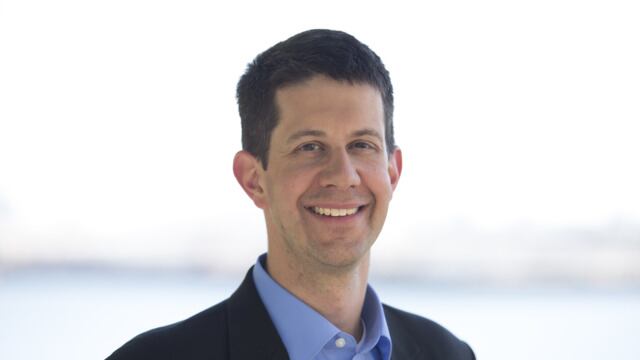Autonomous cars get all the press, but Daimler's Matthew Pfaffenbach says a lot of the tools that will soon be used in autonomous vehicles are already helping truck drivers today.
Pfaffenbach is in charge of implementing vehicle connectivity at Daimler. and says he believes that many of those technologies will soon change the way everyone drives. He'll talk about autonomous and networked vehicles at Portland's upcoming TechfestNW conference, a gathering of leading thinkers, startups and established companies that has showcased the the Pacific Northwest's talent and innovation for the past five years. The biggest such conference in Portland, it'll be held at the Portland Art Museum on March 23-24.
We talked to Pfaffenbach in advance of his appearance.
WW: What do you plan to talk about at TechfestNW?
Matthew Pfaffenbach: Vehicle connectivity is, I would say, a portion of the presentation—the advances of technology within our industry, and how connectivity enables that tech to become far more useful than it would be on its own.
What are some of the most significant new technologies in trucking?
Autonomous vehicles in commercial application are pretty far out in the future—more science project than reality. But there are a number of systems that currently help the drivers maintain safe operation. Through connectivity, we can help customers access tools that to make their vehicles safer and more efficient. We're able to do adaptive cruise control—if you're in a situation where traffic is heavy, the vehicle can maintain a safe distance.
We can also do predictive cruise control. If I know road grade and GPS location, the vehicle can start making decisions about the most fuel-efficient mode.
Does connectivity among vehicles offer other possibilities?
There's a lot of interest around video imaging. If there's some type of event where the truck was cut off on the freeway, the video can be captured and offboarded to third parties. Drivers can learn what occurred, and make determinations: Was their vehicle at fault?
More meaningful is driver coaching—helping the driver see what they can do to increase their performance. Secondarily, video imaging provides security for both driver and vehicle.
Do drivers worry they're being surveilled by their companies?
Sometimes. There are also different technologies—some fleets only do forward-facing cameras, some do forward- and driver-facing. What I see happening, the moment that video capture helps the driver exonerate themselves, that's when it becomes powerful.
I observe situations where drivers are trying to deliver the same functionality through their own means: They put a GoPro on the dashboard. I'm not a pro truck driver, but i've got a comm license, I've operated a large truck. It's amazing what vehicles will do around vehicles that weigh 70-80,000 pounds—they don't realize that trucks cannot maneuver as they can.
What's on the frontier?
High-definition maps have a crucial role to play, to show you what's happening in a specific lane, a specific stretch of road.
I was driving I-5 in the Broadway zone, my GPS had traffic backed up to the Marquam—I had no idea what lane the congestion was in. Some people were switching lanes trying to find one they thought it would be faster, then they realize they made a bad choice. I was not aware coming around the curve that traffic was coming to a halt—I see all the brake lights, I have to stop, and hope the person behind me will stop. That kind of information becomes useful.
Where's this high-res data coming from? Other vehicles equipped with the technology? Satellite?
There will be two modes. One is near-field communication, with vehicles in some proximity communicating safety event information back and forth: hard breaking events, slow traffic, whatever the case may be. Vehicles that have this technology would share that information, whether car, truck or bus.
The other thing is you will have is data going to a cloud environment. The likely repository would be a navigation company.bThrough a cloud environment, this could be broadcast quickly enough to be relevant. Daimler may lead deployment, but I see this becoming as mainstream as a radio in a car is today.
TechfestNW will be held at the Portland Art Museum March 23-24, 2017. For information and tickets, go to techfestnw.com.

